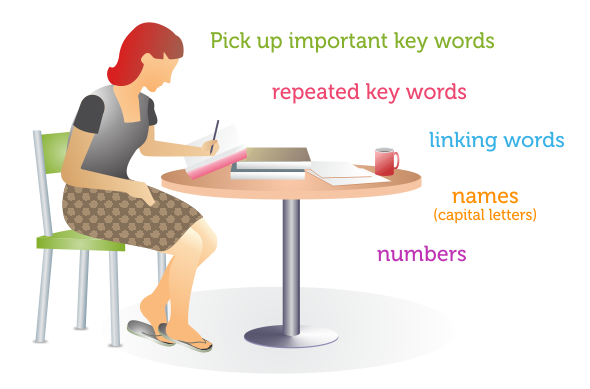SKIMMING
Skimming
is sometimes referred to as gist reading. Skimming may help in order to know
what the text is about at its most basic level. You might typically do this
with a magazine or newspaper and would help you mentally and quickly shortlist
those articles which you might consider for a deeper read. You might typically
skim to search for a name in a telephone directory.
You
can reach a speed count of even 700 words per minute if you train yourself well
in this particular method. Comprehension is of course very low and
understanding of overall content very superficial.
Skimming
involves reading quickly to get the main idea of a text. Reading topic
sentences (usually the first sentence of a paragraph) can be an effective way of
understanding the main idea of the text.
- Read the first paragraph of the chapter line by line
- Next, read all the bold print headings starting at the beginning
- Read the first sentence of every paragraph
- Study and pictures, graphs, charts, and maps
- Finally, read the last paragraph of the chapter
SCANNING
Scanning
involves searching for numbers, symbols and long words in a text. This is a
useful way of locating answers in reading exams. You can scan the text for
words or numbers from the question.
Scanning
involves getting your eyes to quickly scuttle across sentence and is used to
get just a simple piece of information. Interestingly, research has concluded
that reading off a computer screen actually inhibits the pathways to effective
scanning and thus, reading of paper is far more conducive to speedy
comprehension of texts.
Something
students sometimes do not give enough importance to is illustrations. These
should be included in your scanning. Special attention to the introduction and
the conclusion should also be paid.
- Looks for contextual clues.
- Tries to anticipate what the answer might look like and what sorts of clues would be useful.
- Be aware of the graphic form that the answer may take, such as a numeral, a written number, a capitalized word or a short phrase that includes key words.
INTENSIVE READING
We use
this skill when we need to understand every work in a part of a text. This may
be used when we answer detailed reading questions in exams.
This
type of reading has indeed beneficial to language learners as it helps them
understand vocabulary by deducing the meaning of words in context. It moreover,
helps with retention of information for long periods of time and knowledge
resulting from intensive reading persists in your long term memory.
PREDICTING CONTENT
To
familiarise yourself with a text, it is a good idea to make predictions by
looking at pictures and headings before you start to read. Think about the
following questions before you read a text:
- What do the pictures show?
- What do the headings and subheadings tell you? What topic might the article be about?
- What do you already know about this topic?
VIDEO CLASS - SKIMMING AND SCANNING
For more videos visit profile



No comments:
Post a Comment